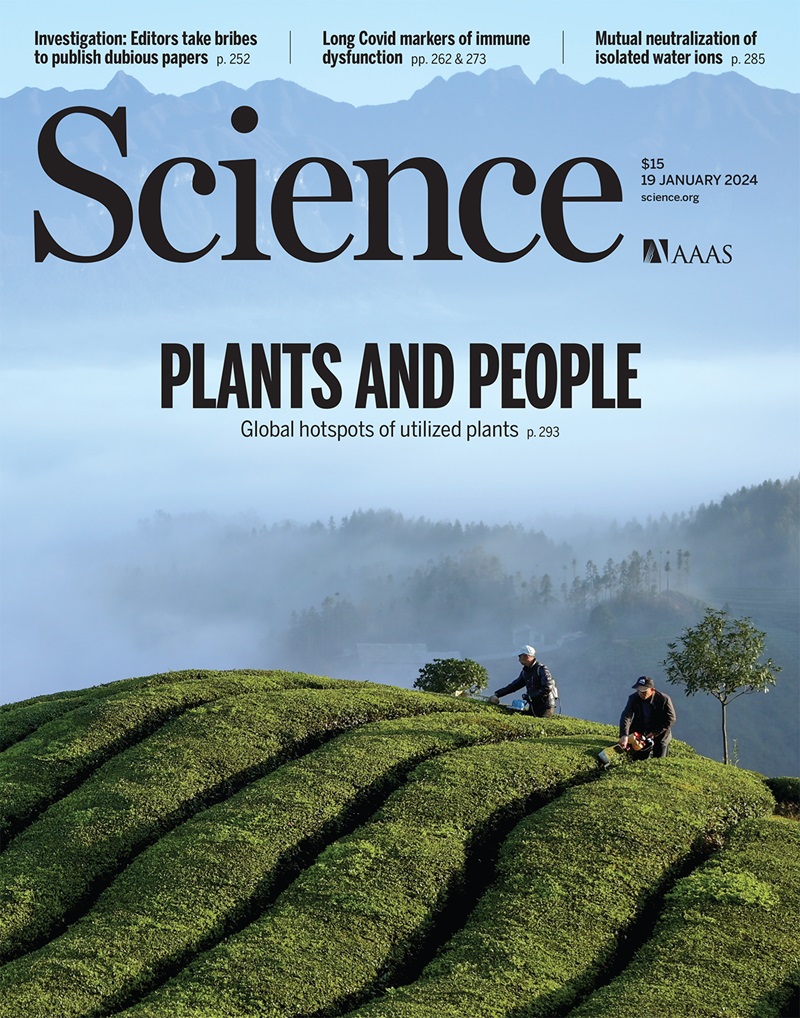A bendable biological ceramic
IF 45.8
1区 综合性期刊
Q1 MULTIDISCIPLINARY SCIENCES
引用次数: 0
Abstract
From a catastrophic bridge collapse to broken industrial equipment to the mundane snapping of a plastic latch, structures can break when their components fail because of fatigue—damage accumulation caused by repeated stresses. Fatigue is a problem not just for artificial structures but also for organisms. Running, jumping, chewing, flying: Many of life''s activities involve repeated loads that can cause fatigue failure (1), leading to injury or death. This places a high evolutionary pressure on avoiding and repairing fatigue-caused damage. Biomineralized tissues—such as bone, teeth, and mollusk shell—are often notably tough, fatigue-resistant structures that are built primarily from brittle ceramic components and thus have provided inspiration to materials scientists seeking to overcome the usual trade-off between strength and toughness (2–4). Unlike these relatively rigid structures, on page 1252 of this issue, Meng et al. (5) reveal multiscale, fatigue-resistance mechanisms of a robust, bendable biomineralized structure: the hinge of a freshwater mussel, Cristaria plicata.
一种可弯曲的生物陶瓷。
一种抗疲劳的软体动物铰链可以促进新材料的发展。
本文章由计算机程序翻译,如有差异,请以英文原文为准。
求助全文
约1分钟内获得全文
求助全文
来源期刊

Science
综合性期刊-综合性期刊
CiteScore
61.10
自引率
0.90%
发文量
0
审稿时长
2.1 months
期刊介绍:
Science is a leading outlet for scientific news, commentary, and cutting-edge research. Through its print and online incarnations, Science reaches an estimated worldwide readership of more than one million. Science’s authorship is global too, and its articles consistently rank among the world's most cited research.
Science serves as a forum for discussion of important issues related to the advancement of science by publishing material on which a consensus has been reached as well as including the presentation of minority or conflicting points of view. Accordingly, all articles published in Science—including editorials, news and comment, and book reviews—are signed and reflect the individual views of the authors and not official points of view adopted by AAAS or the institutions with which the authors are affiliated.
Science seeks to publish those papers that are most influential in their fields or across fields and that will significantly advance scientific understanding. Selected papers should present novel and broadly important data, syntheses, or concepts. They should merit recognition by the wider scientific community and general public provided by publication in Science, beyond that provided by specialty journals. Science welcomes submissions from all fields of science and from any source. The editors are committed to the prompt evaluation and publication of submitted papers while upholding high standards that support reproducibility of published research. Science is published weekly; selected papers are published online ahead of print.
 求助内容:
求助内容: 应助结果提醒方式:
应助结果提醒方式:


